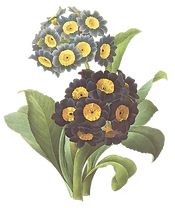Happy, Hardy and Heat Tolerant
- Cynthia Thomas
- Jul 18, 2018
- 3 min read

Well-known as a perennial favorite, the coneflower is now becoming a show-stopper as well. New hybridized colors and shapes, have this central prairie native becoming a fun feature in landscapes everywhere. And they’re easy to share!
My pinky-purply coneflowers came from divisions that my aunt – who gave me my start in the perennial world – dug out for me one spring. While I was complaining about the cost of annuals, she gifted me a few tufts of these coarse, green plants that have since bloomed tall and spread quite nicely around my gardens – giving the yard some much-needed color in the heat of summer due to deep taproots.
Similar to daisies and black-eyed Susans, coneflowers reach for the sun in the garden with their happy faces. While they can tolerate some shade, they will thrive and multipy in full sun – making a tall backdrop to lower annual flowers, or a lovely mixture with other tall perennials like day lilies, asters, Coreopsis, false indigo (Baptisia), Catmint, hardy geraniums, deep blue Salvias, and lots of ornamental grasses.
The new hybrids range in color from greenish white, through all spectrums of yellows, oranges, orange-red, pink and bi-colored (green and pink). Some forms have double petals that make them look more like mums than daisies. Fragrance has also been bred into many of the recently introduced cultivars. A friend of mine has done a whole flower bed with the different types and that’s what’s pictured here.
And best of all, they attract all kinds of butterflies and songbirds that love to perch on their cone heads and eat the seeds. In fact, it is the unique shape of the spiny central disk that gives this flower its generic name – echinacea - derived from the Greek word ἐχῖνος, meaning "hedgehog".
If you’re like me, you’ll probably want to bring some of these beauties inside as well. Coneflowers lasts incredibly long both in the yard and in the vase. They can grow from 18” to 5 feet tall and will bloom through the fall without even deadheading. If you cut them back (by about one/third) when they start fading in late summer, they will continue blooming until the first frost. Of course, you can let them simply go to seed – which adds a lovely, structural element to your winter garden – a la, Dutch Landscape Designer Piet Oudolf, known for his love of native plantings and the garden architect of NYC’s Highline Park.
Coneflowers can be grown by seed, but if you really want some of the new, spectacular colors, it’s easiest to buy echinacea as plants. And this late in the season, you may be able to get a bargain – which doesn’t make sense for annuals, but is a bonus for perennials. They will have plenty of time to spread and then reseed to be even better next year. (I have heard of some of the new hybrids reverting back to the purple original. It has to do with the parent plant and can happen with all seeds. They only way to get a true offshoot of any plant is to take a piece of the original.)
Coneflowers aren’t just for decoration, either. The American Prairie Indians used them for a variety of ailments, including: cold symptoms, coughs, sore throats, headaches, and many tribes including the Lakotah used it as a pain medication. More recently, you may have seen or heard of echinacea in all manner of cold remedies, too. Natural remedies are usually taken from the root of the echinacea purpurea – the original prairie plant. According to “Home remedies for You”, herbalist recommend echinacea to boost immunity in the event of colds, flu, respiratory tract infections, and mild bladder infections.
Whether you plan to make infusions from your coneflower or just want to add some reliable perennials to the garden, I highly recommend this hardy, native beauty.





























Comments